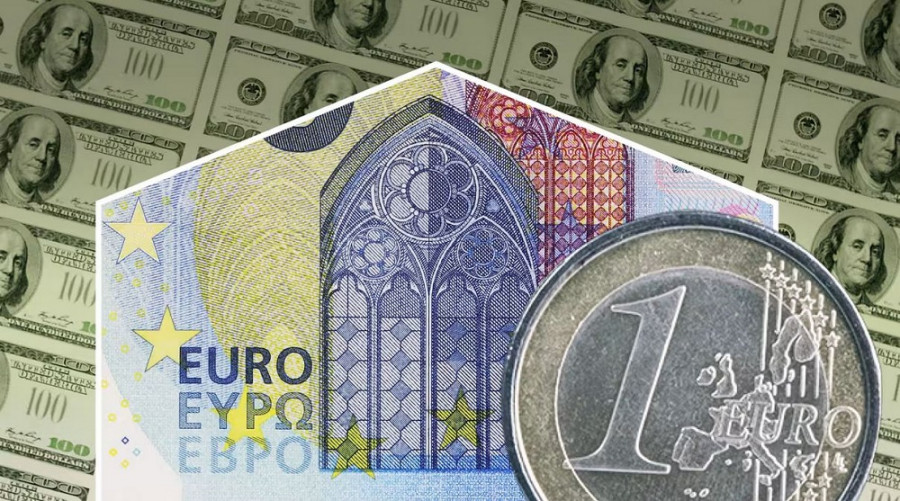The EUR/USD pair remained stagnant amid a nearly empty economic calendar and relatively calm in the news headlines.
Last week, the greenback saw increased demand amid geopolitical tensions. Iran carried out missile strikes on the territory of Pakistan, Syria, and Iraq (in the latter case, near the American consulate in Erbil). In response, Pakistan launched a strike on Iranian territory. According to some reports, both countries even deployed troops to their borders, putting them on high alert. The situation was only resolved on Friday when both sides announced reconciliation and de-escalation. Washington also refrained from getting involved, stating that American assets and citizens in Iraq were not harmed. As a result, the tension decreased, along with the U.S. dollar index.

However, there is still one potential hotspot that could flare up. Since November, Houthi rebels in Yemen have carried out nearly 30 attacks on merchant vessels passing through the southern part of the Red Sea and the Gulf of Aden. According to representatives of the movement, this is in response to Israeli aggression in Gaza, so their targets are ships in some way associated with Israel. After the U.S. and the UK conducted strikes on Yemen, Houthi vessels blacklisted British and American ships.
The situation is far from de-escalating. Moreover, there have been rumors that the White House is developing plans for a protracted military campaign in Yemen, following the coalition's strikes failing to stop the group's attacks on maritime trade. According to The Washington Post, the White House has given the green light to the Pentagon for a large-scale military operation. Insiders say the operation won't drag on for years, like in Afghanistan, Syria, or Iraq. However, none of the sources could specify the end date of the operation, or even the start date for full-scale military action.
As a result, the market has reacted fairly calmly to this report, and trading opened without a significant gap on Monday, almost at the level of Friday's closing (1.0898). The impending U.S. military operation against the Houthi rebels in Yemen didn't impress the market, so the pair is trading in a calm mode, near the 1.09 level.
On the dollar side, dovish sentiments are getting weaker in the foreign exchange market. The probability of keeping rates unchanged at the January meeting stands at 99.5%, according to the CME FedWatch Tool. The likelihood of a rate cut in March has decreased to 44%. In contrast, at the end of last year, after the December Fed meeting, the probability of this scenario was approaching 80%.
Currently, there's a so-called "blackout period": in which Federal Reserve staff generally do not speak publicly between a week prior to the Saturday preceding a Federal Open Market Committee (FOMC) meeting. But considering the previous statements of many Fed representatives, we can assume that the central bank won't announce a rate cut at the next (March) meeting. Most likely, the central bank will tie the prospects of monetary easing to the inflation dynamics, thereby, providing support to the greenback.
The decline in Treasury yields and the downturn in risk sentiment play a role against the dollar "in the moment". In addition, traders are hesitant to open large positions ahead of important releases: on Thursday, U.S. fourth quarter GDP data will be published (modest growth of 2.0% is expected), and on Friday, the core PCE index will be released (a drop to 3.0% is expected, almost a three-year low). These reports can influence the "hawkishness" of Fed members, so market participants are in no rush to open large positions, either in favor of the dollar or against the U.S. currency.
The euro is also awaiting a major event. The European Central Bank's January meeting will be held on Thursday, during which the central bank will clarify its position on the fate of the APP. According to most experts, the ECB will refute rumors that the first rate cut will happen as early as this spring. Based on statements from many ECB representatives, the central bank is unlikely to take the first step in that direction before this summer.
However, such rhetoric will not come as a surprise to market participants. ECB members have been laying the groundwork for this by voicing hawkish signals too strongly. Therefore, the market may take a fairly cool view of the formulations that have already been voiced.
Thus, the dollar and the euro are waiting for important fundamental signals. In such an environment, a sideways movement is inevitable because neither buyers nor sellers of EUR/USD are ready to open large positions in either direction.
Technically, it makes sense to consider long positions only after the pair consolidates above the resistance level at 1.0930 (the Tenkan-sen line on the same timeframe). In that case, w can expect the pair to rise to 1.0960 (the Kijun-sen line) and ultimately 1.1050 (the upper Bollinger Bands line on the daily chart). You may consider short positions after the bears consolidate below the support level at 1.0850 (the lower Bollinger Bands line on the daily chart, coinciding with the upper boundary of the Kumo cloud).
The material has been provided by InstaForex Company - www.instaforex.comfrom Forex analysis review https://ift.tt/5iKntRo
via IFTTT
